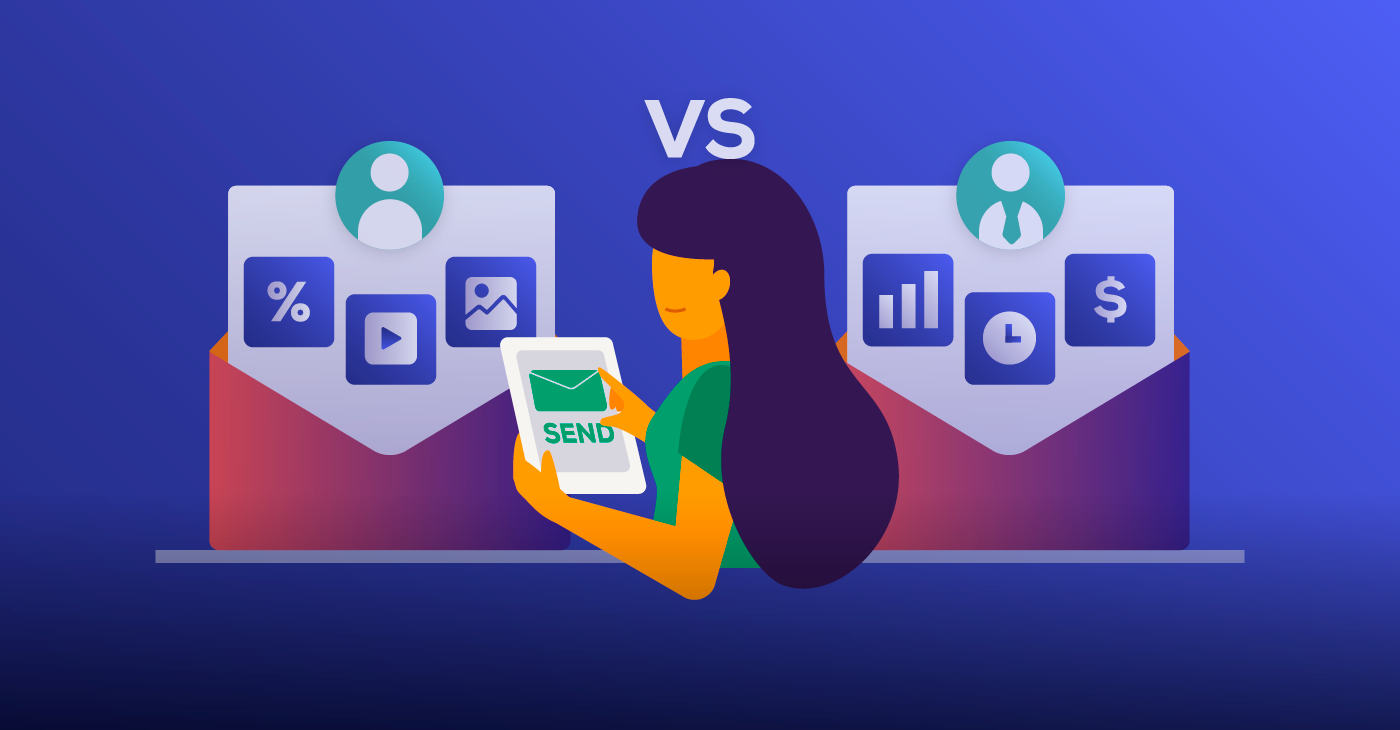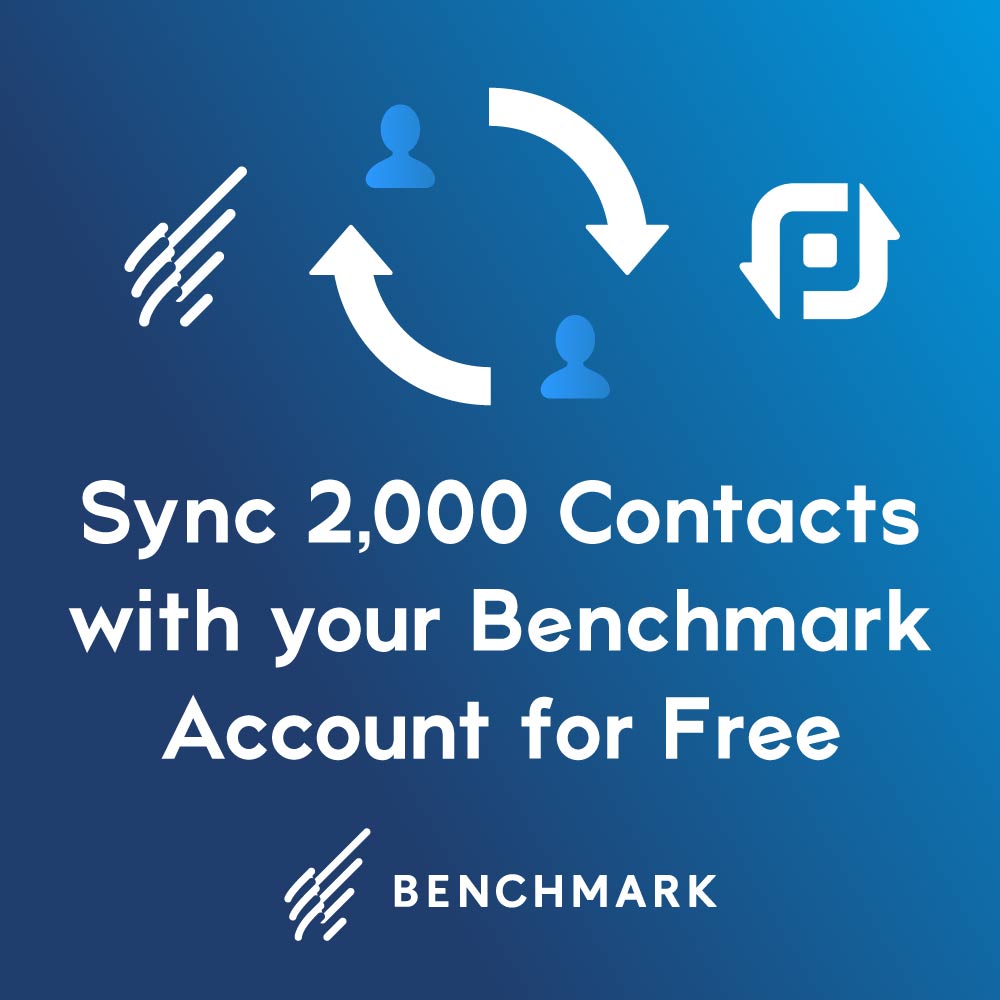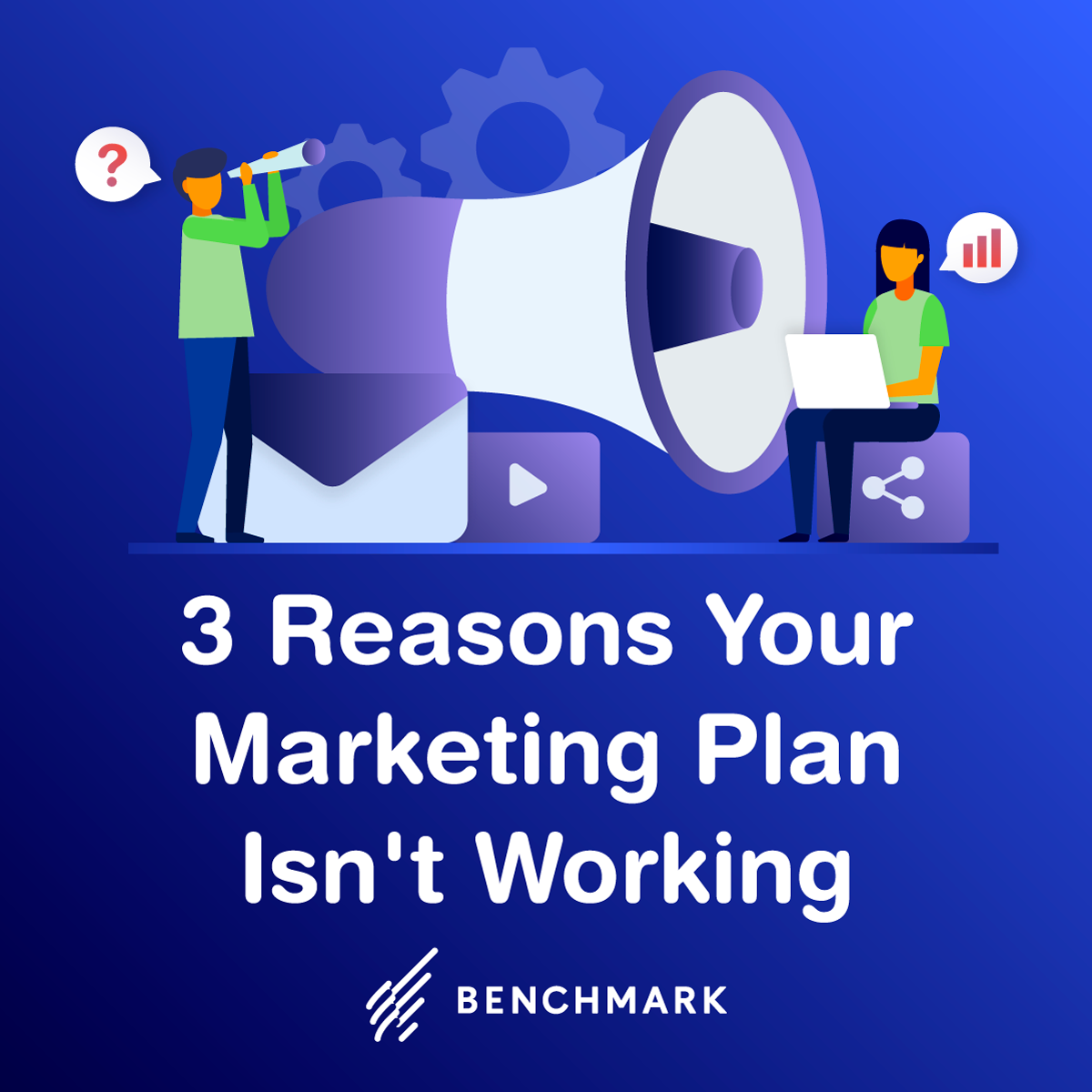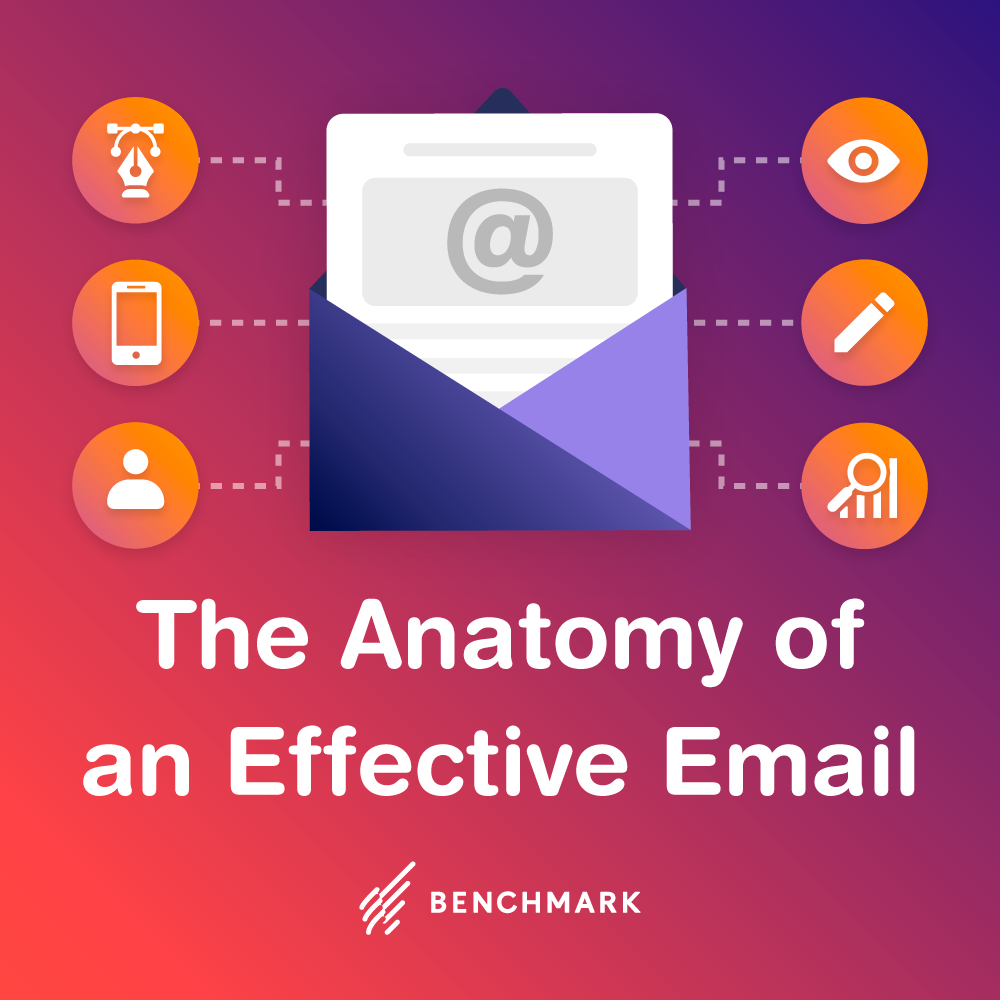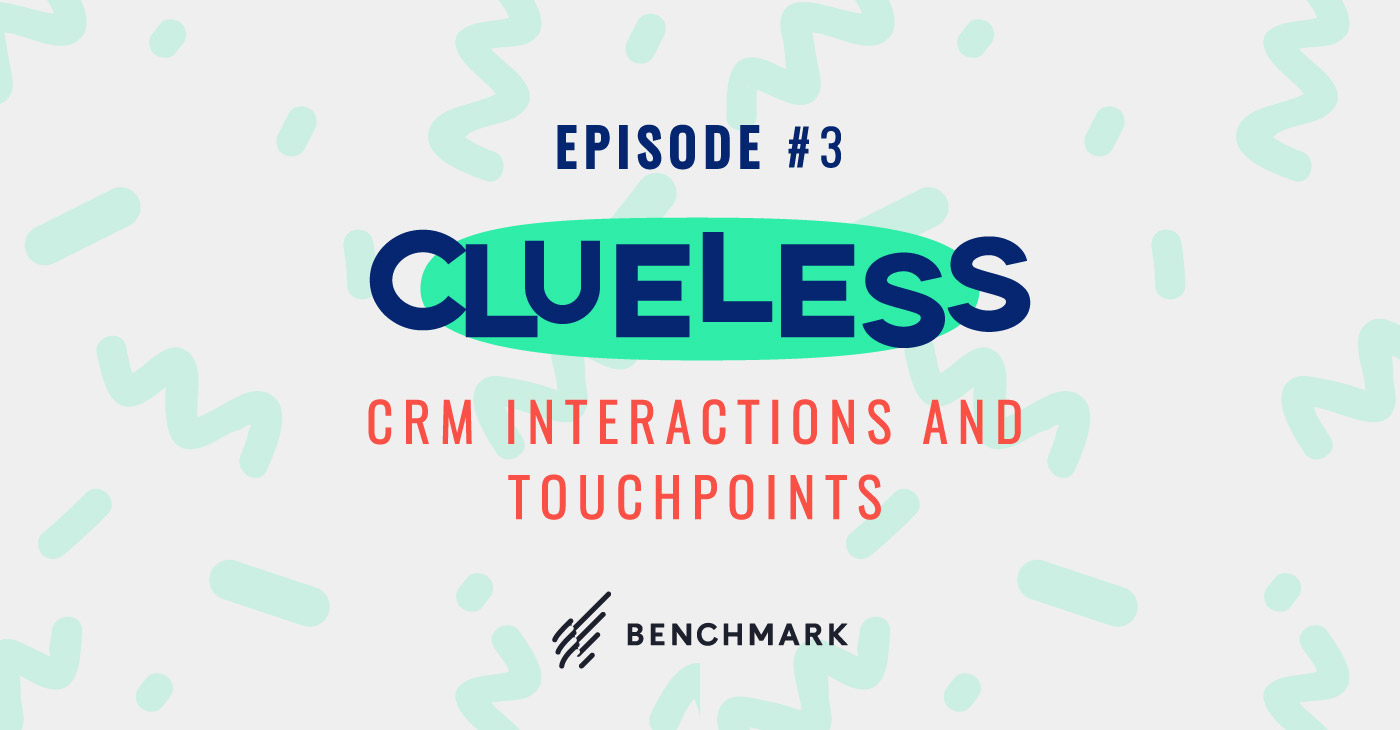
We discuss who in your company can and should be using CRM and the touchpoints with your customers and prospects where they might be interacting with your CRM or you may be collecting data for it. These two points are important for gaining an understanding of how CRM plays into your workflows. Check it out!
00:22 Andy Shore: Welcome back everybody to another episode of “Clues for the clueless CRM Marketer”, and today, we’re gonna continue kinda getting into CRM and how you interact with it and who interacts with it and on that note, we kinda wanted to talk through the different interactions, and touch points where a CRM comes into play both from the customer’s side, and of the employees side I think and so where does that start it? I mean, like let’s say from the workforce side, who all is using that CRM in the company and how are they doing that?
00:55 Paul Rijnders: Got it, okay. So there’s what the workforce is doing and what the CRM calls those things, right? So there is a little bit of an adoption and it’s not a heavy curvy… So you just gotta know where to put it, because as we talked about in our last few episodes, you could just make everything a note. But now some insufferable person gotta go through all those notes and pull out all those touch points, right? Or, you have some kind of program that does that or maybe the thing actually does it for you. It pulls out those important words that you’re looking for. Better yet, why doesn’t everyone in the company decide that what they’re doing is all activities centered around this client? So what these activities are, at least in our CRM, is their tasks or events or calls. So, is your company making outbound calls to your customers or are the inbound calls?
01:47 PR: Well those be noted as a particular record type? And the reason that’s very helpful is if you note that call, as an activity and for us they’re all the same kind of record activities call center task but now, someone can, later on, say, “Okay, how many calls did we make today? How many calls came in today? What was the outcome of that call? How many minutes did we spend on that call?” And you could do the same thing for events, which is basically like a meeting. So if you’re gonna have lunch with somebody or you’re doing a demo, something that has a beginning time and an end-time, that’s probably more of an event-type activity. The final thing is task which is everything else. It might be the thing you’re doing, mostly. So, are you sending something to the client? Are you doing something on behalf of the client? If that particular task resulted in some kind of action for the client, the client’s aware of, or that the client responded to you, or that you talked to the client, then that very well could be a task, but if you’ve put in those three buckets, then those could be measurable.
02:52 PR: It does matter what CRM we use. Maybe we have a CRM that only has tasks, and tasks is all of those things. But the point is, that since a CRM is a relational database, it’s great to be able to pull report later on and say, “Okay well, the contacts that are related to the companies and the activities are either related to the contacts or they are related directly to the companies.” Let me see if I can do report and say “What activities that I do for what companies? What companies did I do the most activities for? What activities did I do that resulted in the most sales?” So when you say touch points, yes, they are interactions. Even a support ticket, I guess, you could consider a touch point, right? But the end point of getting all that information into a structured kind of record which is one of those that we just talked about, is that somebody, somewhere down the line, even if it’s you and you’re a whole one person show, you can say, “Oh wow, this is how I spent my time. And these were the results.”
03:51 AS: You can even get that several thousand high view whatever, totally vouching what that says…
[chuckle]
04:00 PR: 30,000-foot view maybe, I don’t know.
04:02 AS: That is what I was going for but just as I was trying to say it my mind was just like, “Nope, we got nothing to say right now, sorry.” There is no recall there when I went to reach for it, but it makes sense that, it’s really like anyone from the CEO down to sales support, marketing people, those guys you got in your trenches, that are using that CRM for all the different reasons and kind of touch points that you might have with a customer.
04:29 PR: Yeah, because what happens when you don’t have this, you have a bunch of sales people and support people that are kinda just doing things on their own, solving their problems because they need something to solve their problem, they’re not like gonna… You’ve done due diligence, you’ve hired quality people, but maybe people are writing down these things in notepads or maybe they’re tracking this all on a spreadsheet. What if you got four or five spreadsheets in several places? What if you don’t have the spreadsheet in a cloud, like a Google spreadsheet, which is maybe a better way to go on that, but how is all that information shared? How is that actionable? How is it measured? How are you measuring those results? So, it needs to be in that simple spot.
05:06 AS: And you mentioned that it’s even things like scheduling lunch meetings or those sorts of things that you never think like, “Oh, my lunch for today, that goes in the CRM, but… ”
05:15 PR: Yeah.
05:15 AS: What are some other of those touch points that someone might not expect, is really a CRM task or activity?
05:23 PRAS: Oh, got it, yeah. Well, some of the more innocuous type things and I guess it’s gonna be specific to your business, I think that’s the most important thing. You never want to record things just for the sake of recording them, but I would say anything that you do that involves the customer, that is a pathway to them either buying more stuff or just keeping them as a customer. For instance, a lot of our businesses don’t have something where they sell every day, they sell a subscription, right? Maybe, what if you’re a health club… The health club. Yeah, it’s great to do add-ons, your main goal with the health club is so that that person, when they see their monthly bill, that they don’t say, “Well, I only worked out twice this year, maybe I should cancel it.” Right? You want to retain that customer.
06:12 PR: So what are you doing to make that customer feel loved, right? Are you sending out email marketing to that customer? Guess what? What if that customer is only not coming to your gym, but they are getting your monthly newsletter, your weekly newsletter about eating healthy, or things they can do at home, meditating, etc. This is getting kinda out there, but if that customer sees value in that, then guess what? Those email marketing pieces are a touch point. If your email once every month, week, just say, “Hey, I’m checking out on you. Just want to make that everything’s okay.” If they respond to that and you can see that they opened it, then that would be a touch point. So how do you know that that little personal email that you sent is a touch point?
06:57 PR: Well, with your email you can do some tracking and you can see whether that’s been opened or not. And if it’s been opened, then you can say, “Well at least that person clicked on that and they’re engaging with it.” Did they do a click? That’s even better. They clicked on my link, that’s an engagement too. So back to your question, maybe things do transcend that, I saw that person face-to-face, or I did a call for X-amount of minutes, or I did task X, Y, and Z.
07:23 AS: Yeah. Where that opens thing falls short, is if you’re a person like me who is so neurotic that you have to zero-out your inbox all the time, so there’s no push notifications looking at you. So I open everything, but I look at 10% of it. I’m the one skewing the data, I guess, is what I’m trying to say. I’m sorry to all the marketers out there.
07:46 PR: That’s okay. Then it goes to the next level, right? So as a CRM marketer, what you should be looking at is not just your opens rate, because if your opens rates… If you can’t see a correlation between awesome open rates and an uptick in sales, then there’s a disconnect there. So then you go next level, and you say, “All right, well, you know what? Maybe they’re interacting if they’re actually clicking on this stuff, right?” Now you got quality interactions. Oh sorry, go ahead.
08:17 AS: Now, it’s just ’cause… See everybody. Paul just took my throwaway joke and turned it into another teachable moment.
08:22 PR: That’s what you get.
08:23 AS: That’s why he’s the perfect co-host…
08:25 PR: That’s what you get with CRM soda. That has no context [08:30] ____ the five-minute episodes. I joked with Andy that we should rename the podcast CRM soda.
08:37 AS: Yeah. And we’re still not gonna do it, but we will see you guys next time. Thanks for tuning in. Bye.
